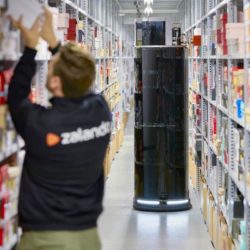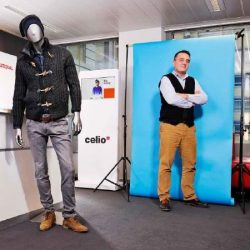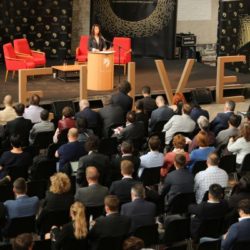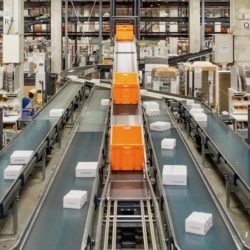Zalando sets Toru robots to work

Online fashion platform Zalando is testing two robots in the logistics process at its fulfilment centre in Lahr, Germany, where they will be supported by six more Torus. The main task of the two Toru robots will be to perform ‘pick and put’ activities that are too strenuous and hence not ergonomically safe for human logistics employees. It is a pilot project.
“After being tested in various real-life situations, the Toru robots have consistently proven themselves to be reliable in a logistics environment, so we have no concerns about using them at our fulfilment centre in Lahr,” says Carl-Friedrich zu Knyphausen, Head of Logistics Development at Zalando. What makes the Toru robots so special is that they are able to pick up and move individual shoe boxes. This sets them apart from the majority of other robotic systems, which can often move entire pallets or crates but are unable to pick up individual products.
After eight months of testing at the company’s Erfurt fulfillment center, the two robots are now travelling to Zalando’s fulfilment centre in Lahr, where there is sufficient room for the Toru robots as well as their transfer and charging stations.
Measuring productivity
Together with Magazino, the start-up behind Toru, Zalando agreed on a number of parameters designed to measure the robots’ productivity. These included the error-free handling of products (in this case shoe boxes) and getting enough work done, taking account of their downtime for maintenance purposes. At the beginning, for example, the robots would regularly stand still for lengthy periods of time due to detection errors or computing time. By reducing these pauses, the number of pick-ups per hour could be increased. The number of pick-ups per hour is still lower than logistics employees achieve manually, however.
Collaboration between people and technology
In Lahr, the robots will handle real customer orders and will work alongside the human operatives in the fulfilment centre. Thanks to the advances in the robots’ hardware and their algorithms during the test phase in Erfurt, they are now more skilled than they were when testing started. “We are continuously testing technologies that take over physically demanding or monotonous tasks from our employees,” states Zu Knyphausen. “But it’s not about transitioning completely to automation; our strategy is really to foster effective collaboration between people and technology.”









